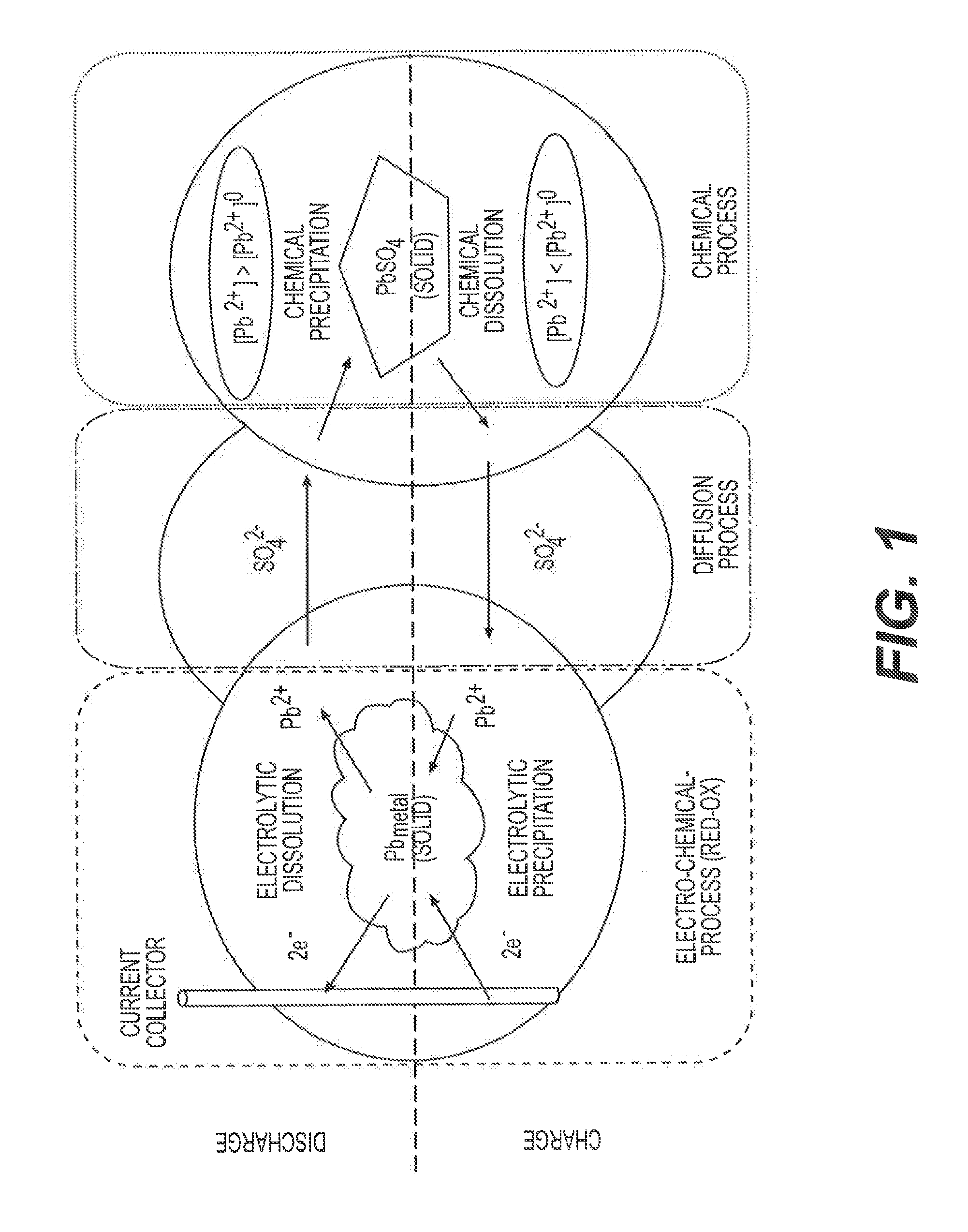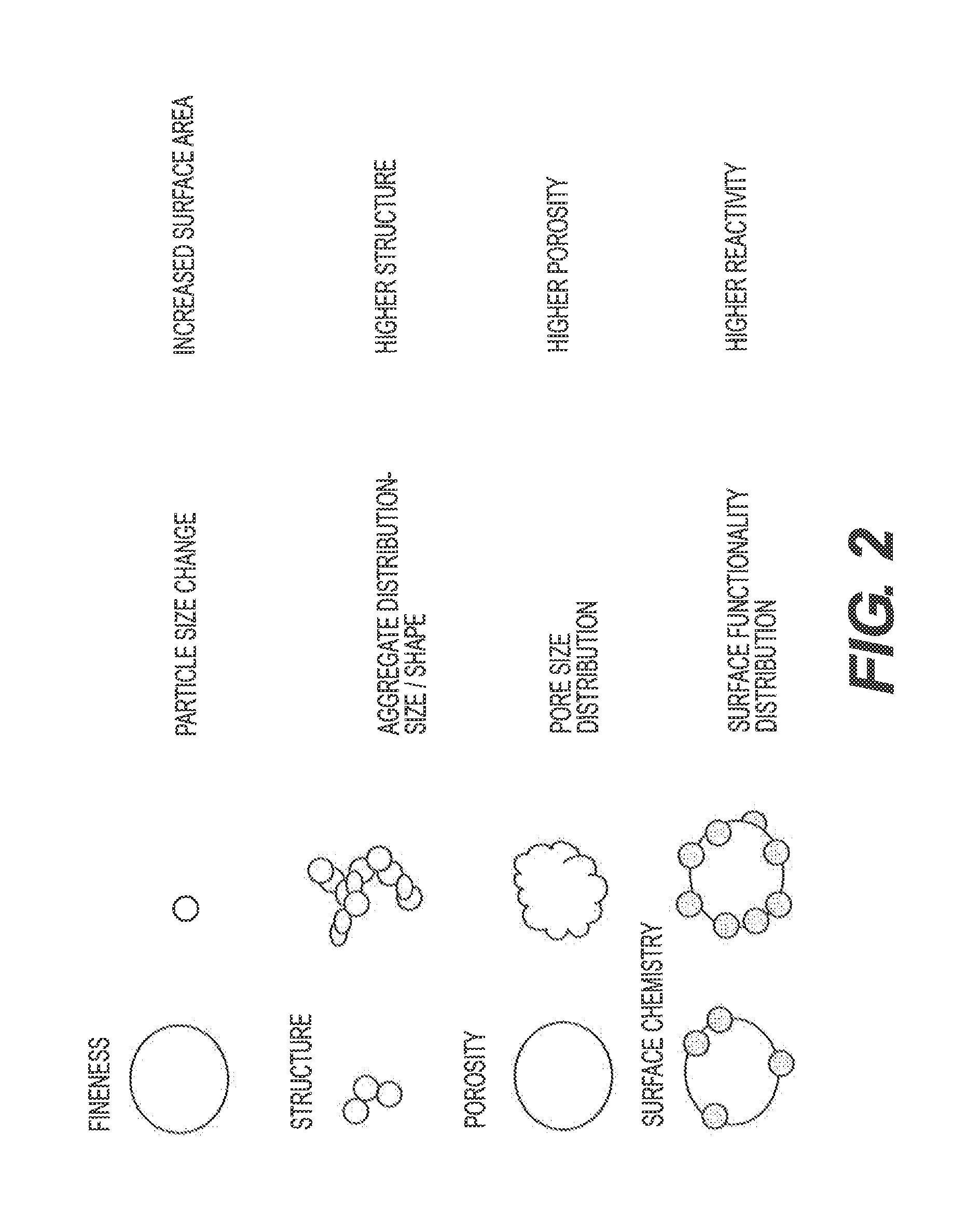Method and apparatus for improving charge acceptance of lead-acid batteries
a lead-acid battery and charge acceptance technology, applied in the field of lead-acid batteries, can solve the problems of cyclic capacity fade, irreversible sulfation, and substantial accumulated capacity turnover, and achieve the effect of increasing the charge input of the lead-acid battery
- Summary
- Abstract
- Description
- Claims
- Application Information
AI Technical Summary
Benefits of technology
Problems solved by technology
Method used
Image
Examples
Embodiment Construction
[0002]1. Field of the Invention
[0003]This disclosure is related to lead-acid batteries in general and carbon additives for improving charge acceptance of lead-acid batteries in particular.
[0004]2. Background of the Invention
[0005]Conventional batteries for vehicle applications include flooded Starting-Lighting-Ignition (SLI) batteries and Absorbed Glass Mat (AGM) batteries. A conventional flooded SLI battery is filled with liquid electrolyte in the cell compartments and may require maintenance to ensure proper performance of the batteries. A conventional AGM battery includes porous micro-fiber glass separators that absorb the electrolyte, and does not need maintenance.
[0006]In micro-hybrid electric vehicles (HEVs), a battery experiences charge-discharge cycles that are typically very shallow (≦10% depth-of-discharge, DOD). Yet, over time, the accumulated capacity turnover can be substantial. Under these conditions, a conventional flooded SLI battery can withstand an accumulated capa...
PUM
 Login to View More
Login to View More Abstract
Description
Claims
Application Information
 Login to View More
Login to View More - R&D
- Intellectual Property
- Life Sciences
- Materials
- Tech Scout
- Unparalleled Data Quality
- Higher Quality Content
- 60% Fewer Hallucinations
Browse by: Latest US Patents, China's latest patents, Technical Efficacy Thesaurus, Application Domain, Technology Topic, Popular Technical Reports.
© 2025 PatSnap. All rights reserved.Legal|Privacy policy|Modern Slavery Act Transparency Statement|Sitemap|About US| Contact US: help@patsnap.com



